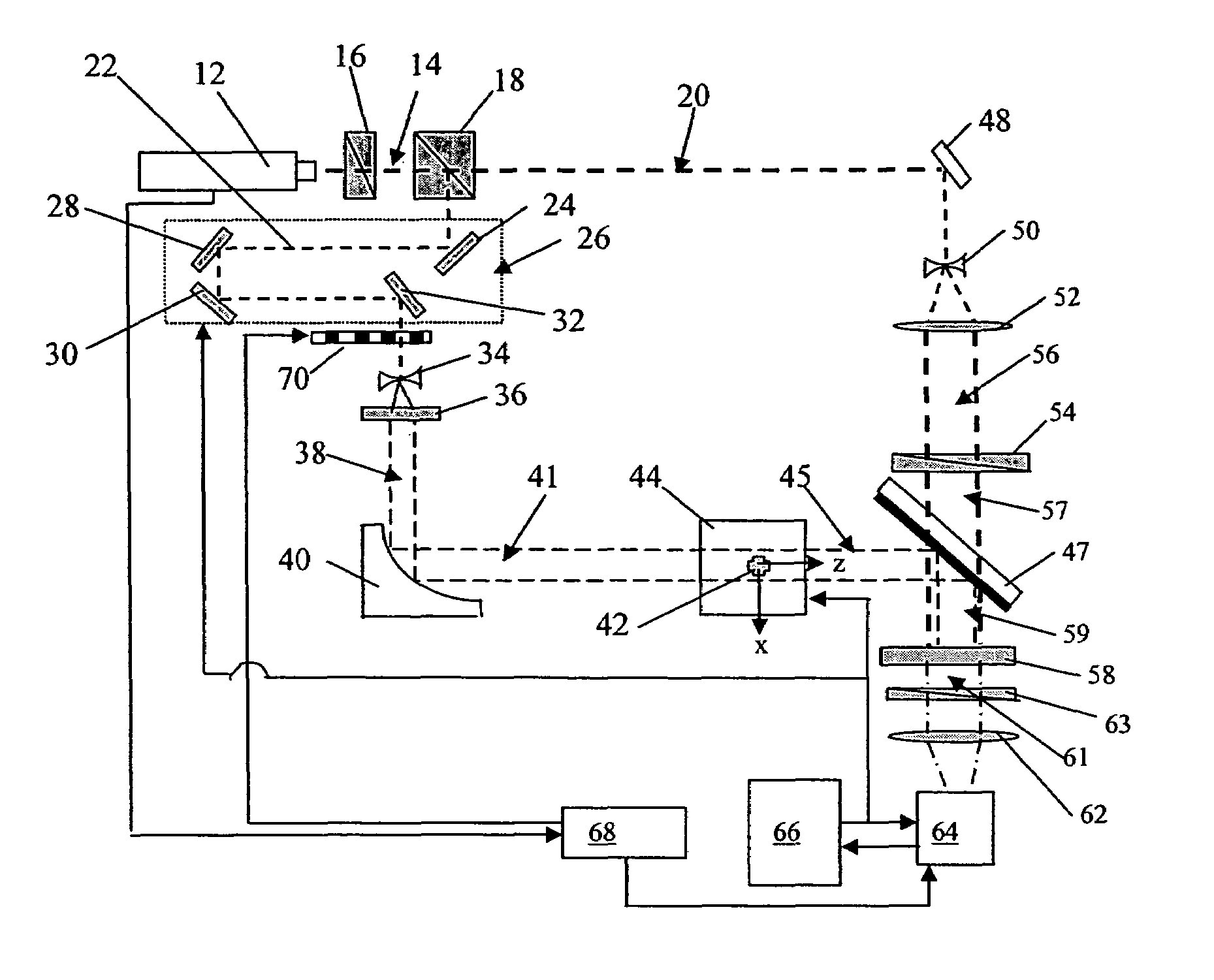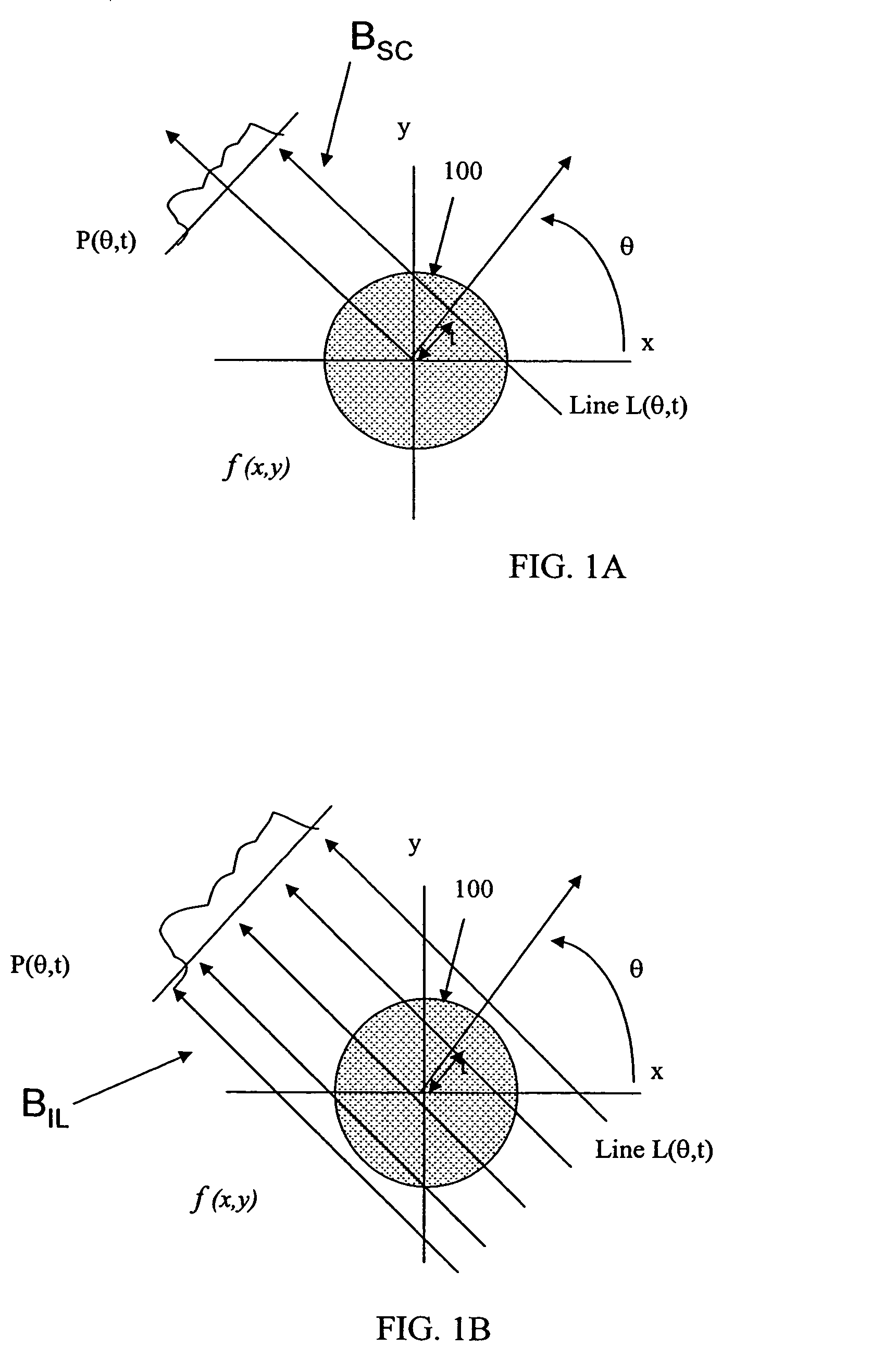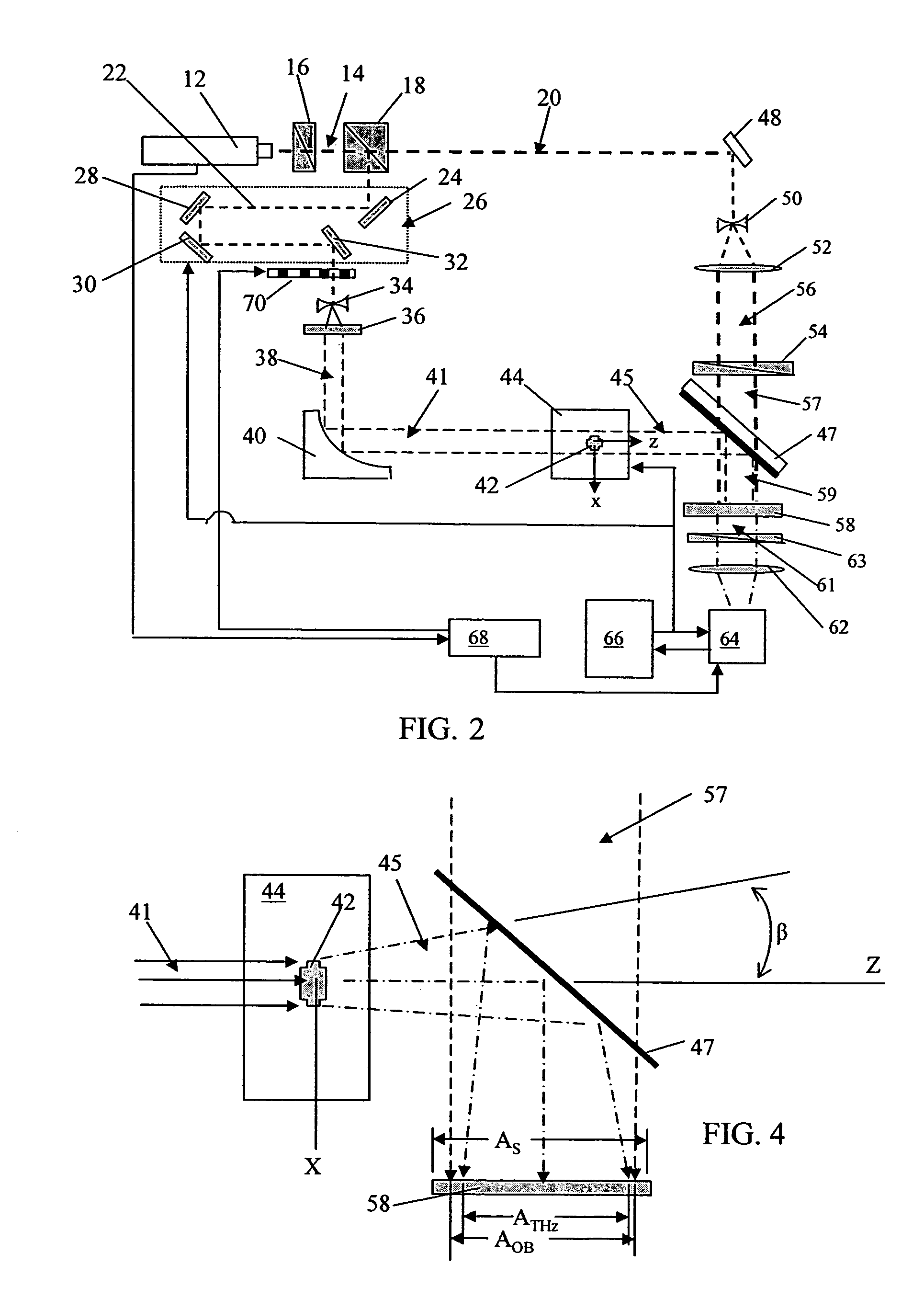Diffraction mode terahertz tomography
a terahertz tomography and diffraction mode technology, applied in the field of diffraction mode terahertz tomography, can solve the problems of poor signal-to-noise ratio (snr) and quality of image reconstruction, and the comparatively long image acquisition tim
- Summary
- Abstract
- Description
- Claims
- Application Information
AI Technical Summary
Benefits of technology
Problems solved by technology
Method used
Image
Examples
example
[0077]The following example is included to more clearly demonstrate the overall nature of the invention. This example is exemplary, not restrictive, of the invention.
[0078]An object composed of three, rectangular, polyethylene cylinders shown in FIG. 7 was used as a sample in an imaging system similar to the system shown in FIG. 2. The three cylinders were arranged in a triangle and each cylinder had a width of approximately 2 mm. The cylinders had a constant cross section that did not vary with height.
[0079]A GaAs photo-conductive antenna was used to generate the THz wave, which had a large amount of lower frequency components. The GaAs antenna gap was 15 mm. The image was acquired with a CCD camera using binning to improve the SNR. The dimensions of the image frame in pixels were 107×107. One hundred CCD frames were averaged at each time delay, again to improve the SNR.
[0080]Image reconstruction was done using both the first Born approximation and the Rytov approximation. In using...
PUM
| Property | Measurement | Unit |
|---|---|---|
| divergence angle | aaaaa | aaaaa |
| frequency | aaaaa | aaaaa |
| frequency | aaaaa | aaaaa |
Abstract
Description
Claims
Application Information
 Login to View More
Login to View More - R&D
- Intellectual Property
- Life Sciences
- Materials
- Tech Scout
- Unparalleled Data Quality
- Higher Quality Content
- 60% Fewer Hallucinations
Browse by: Latest US Patents, China's latest patents, Technical Efficacy Thesaurus, Application Domain, Technology Topic, Popular Technical Reports.
© 2025 PatSnap. All rights reserved.Legal|Privacy policy|Modern Slavery Act Transparency Statement|Sitemap|About US| Contact US: help@patsnap.com



